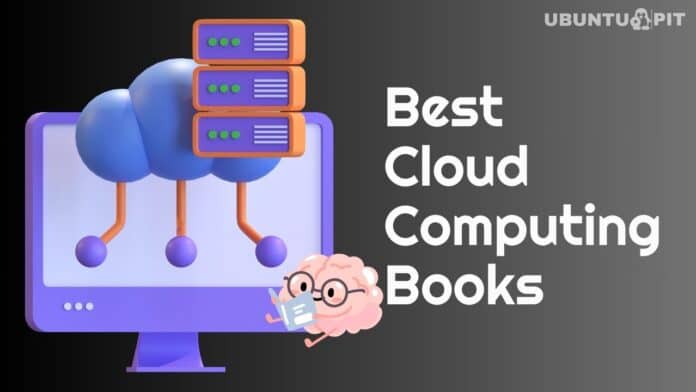Cloud computing is the fastest-growing technology in the IT industry. It is now established as a perfect and effective solution for giving an easy, on-demand, and scalable computing infrastructure to many platforms. The use of cloud computing is everywhere, in education, business, healthcare, agriculture, project management, daily life, and many more. As a result, both amateur and expert knowledge seekers search for learning-staff like Cloud Computing books.
The word ‘Cloud’ of ‘Cloud Computing’ is a metaphoric presentation of ‘The Internet.’ Plenty of books are available on this topic. As a user of technology, it has become essential to know about Cloud computing because it has already taken over the IT sector. Therefore, it is obvious that it will be very tough to remain in the competitive world without knowing about Cloud Computing.
Best Cloud Computing Books Available
In this write-up, we will mention and discuss some very essential books written on cloud computing. You can get books that are for elementary-level learners and gradually books for the experts. Deep study books like The Development of Cloud Computing, Security, Evolution, etc., are also present on our list. We believe you can get all categories of books that you may need to know about cloud computing.
1. Cloud Computing: Concepts, Technology & Architecture

The newbies of the Cloud Computing topic will always look for some basic questions. This book is a good solution for them. It started with the fundamental concepts of cloud computing.
Starting from the basic introduction, you will chronologically get different mechanisms, architecture designs, working procedures, and different case studies. This is one of the best cloud computing books for both amateur and advanced learners because it has discussed every topic from fundamentals to expert level.
Table of Contents
- Fundamental Cloud Computing
- Understanding Cloud Computing
- Fundamental Concepts and Models
- Cloud-Enabling Technology
- Fundamental Cloud Security
- Cloud Computing Mechanisms
- Cloud Infrastructure Mechanism
- Specialized Cloud Mechanisms
- Cloud Management Mechanisms
- Cloud Security Mechanisms
- Cloud Computing Architecture
- Fundamental Cloud Architectures
- Advanced Cloud Architectures
- Specialize Cloud Architectures
- Working with Clouds
- Cloud Delivery Model Considerations
- Cost Metrics and Pricing Models
- Service Quality Metrics and SLAs
2. A Brief Guide to Cloud Computing

The name tells the aim, intention, purpose, and content of the book. This small masterpiece nicely describes cloud computing, mentioning all possible corners. Wishing the two parts, the book brought the competitive world-circling cloud computing.
After that, a clear and concise concept of hardware and software is given. It shows the security and privacy aspects of cloud computing. The book also discusses troubleshooting and future aspects of the topic.
Table of Contents
- Part I: Cloud Computing Basics
- The Rise of Fluffy Computing
- Cloud Computing and Web 2.0
- The Software in the Cloud
- Hardware in the Cloud
- Part II: Cloud Computing Implications
- Security, Privacy, and Reliability
- The Second Digital Revolution
- The Battle for the Cloud
- Trouble in the Boardroom
- The Personal Cloud
- Cloud Computing in the Future
3. Cloud Computing and Software Services: Theory and Techniques

This book will play a very important role in readers’ understanding of the landscape of cloud computing. The book will systematically introduce knowledge of enterprise cloud and different software services. The reasons for and applications of cloud computing will be very clear after reading this book. The large-scale computing service of the cloud is paramount in this book’s discussion.
Table of Contents
- Understanding the Cloud Computing Landscape
- Science Gateways: Harnessing Clouds and Software Services for Science
- Enterprise Knowledge Clouds: Next Generation Knowledge Management System
- Teal Cases and Applications of Cloud Computing
- Large-Scale Data Processing
- Towards a Reliable Cloud Computing Service
- Abstractions for Cloud Computing with Condor
- Exploiting the Cloud of Computing Environments: An Application’s Perspective
- Granules: A Lightweight Runtime for Scalable Computing with Support for Map-Reduce
- Dynamic and Adaptive Rule-Based Workflow Engine for Scientific Problems in Distributed Environments
- Transparent Cross-Platform Access to Software Services Using GridSolve and GridRPC
- High-Performance Parallel Computing with Cloud and Cloud Technologies
- BioBLAB: Bioinformatics Data Analysis Using Cloud Computing Graphical Workflow Composers
- Scale-Out RFD Molecule Store for Efficient, Scalable Data Integration and Querying
- Enabling XML Capability for Hadoop and Its Applications in Healthcare
- Toward a QoS-Focused SaaS Evaluation Model
- Risk Evaluation-based Selection Approach for Transactional Services Composition
4. Cloud Computing Bible
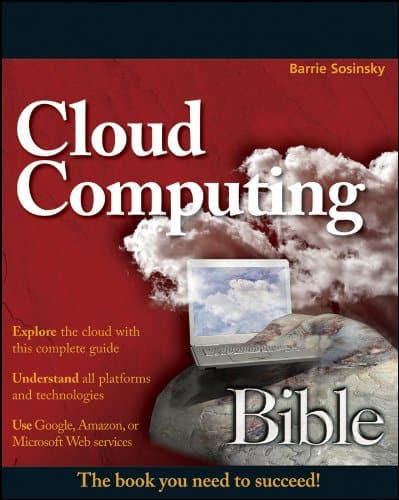
Cloud Computing Bible is the ideal book for learning Cloud computing. The book starts with the basic teaching of cloud computing and then chronologically and perfectly touches all the aspects of the topic. The definition, architecture, and different services provided by cloud computing are well discussed in the book.
The use of cloud computing in different web services platforms like Google, Amazon, and Microsoft is covered in the book. Special emphasis is placed on different applications and mobile clouds. This book is undoubtedly one of the best cloud computing books.
Table of Contents
- Part I: Examine the Value Proposition
- Defining Cloud Computing
- Assessing the Value Proposition
- Understanding Cloud Architecture
- Understanding Services and Applications by Type
- Part II: Using Platforms
- Understanding Abstraction and Visualization
- Capacity Planning
- Exploring Platform as a Service
- Using Google Web Services
- Using Amazon Web Services
- Using Microsoft Cloud Services
- Part III: Exploring Cloud Infrastructures
- Managing the Cloud
- Understanding Cloud Security
- Part IV: Understanding Services and Applications
- Understanding Service-Oriented Architecture
- Moving Applications to the Cloud
- Working with Cloud-Based Storage
- Working with Productivity Software
- Wag Webmail Services
- Communication with the Cloud
- Using Media Streaming
- Using the Mobile Cloud
- Working with Mobile Devices
- Working with Mobile Web Services
5. Cloud Computing for Business: The Open Group Guide
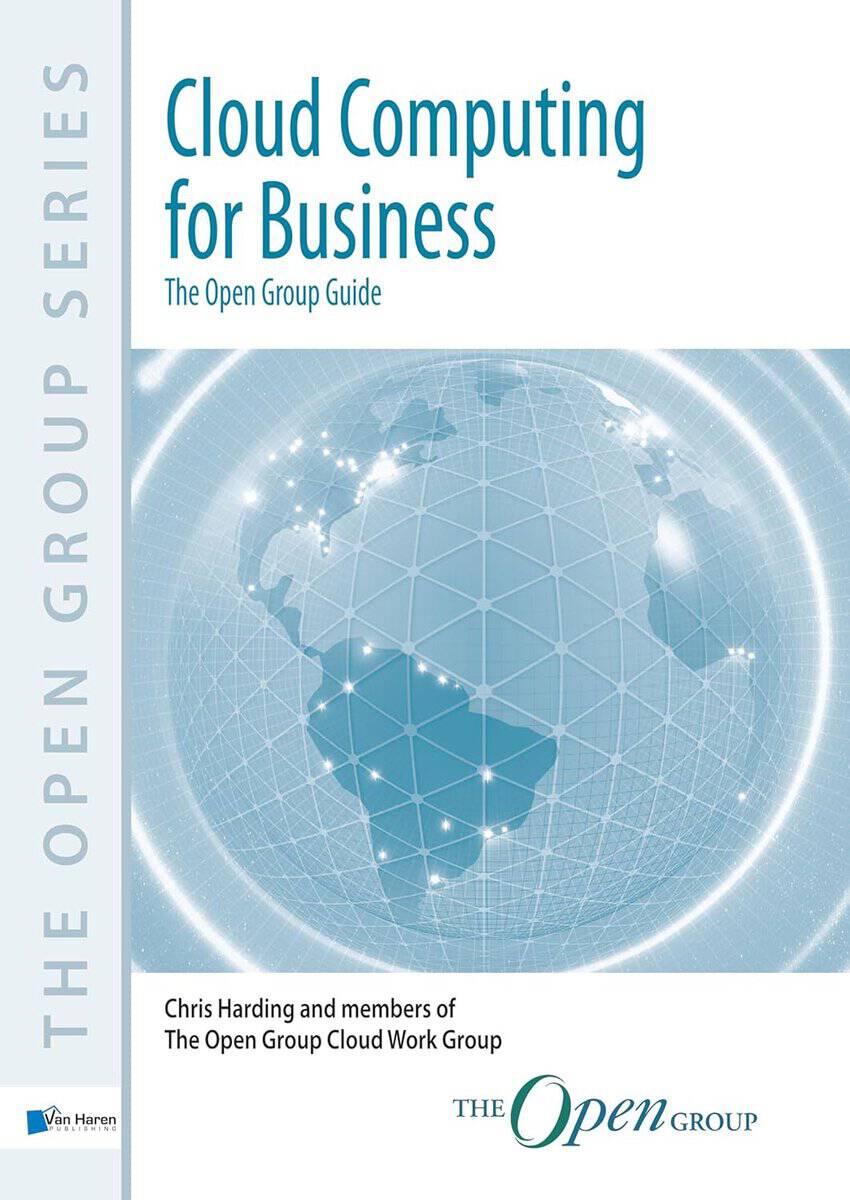
The book started with the definition given by NIST, different characteristics, service models, deployment models, etc. The importance of the cloud is discussed in the book in terms of its agility, productivity, quality, and cost. The readers can get a clear guideline by seeing business opportunities in cloud computing.
After reading the book, knowledge seekers will get a systematic guideline to build their cloud vision. The risk related to it is one of the main focus topics in this book. After all, this book is an all-in-one book for Cloud Computing.
Table of Contents
- What is Cloud
- Why is Cloud
- Establishing Your Cloud Vision
- Buying Cloud Services
- Understanding Cloud Risk
- Building Return on Investment from Cloud Computing
- The Challenge
6. Cloud Computing: Principles, Systems, and Applications
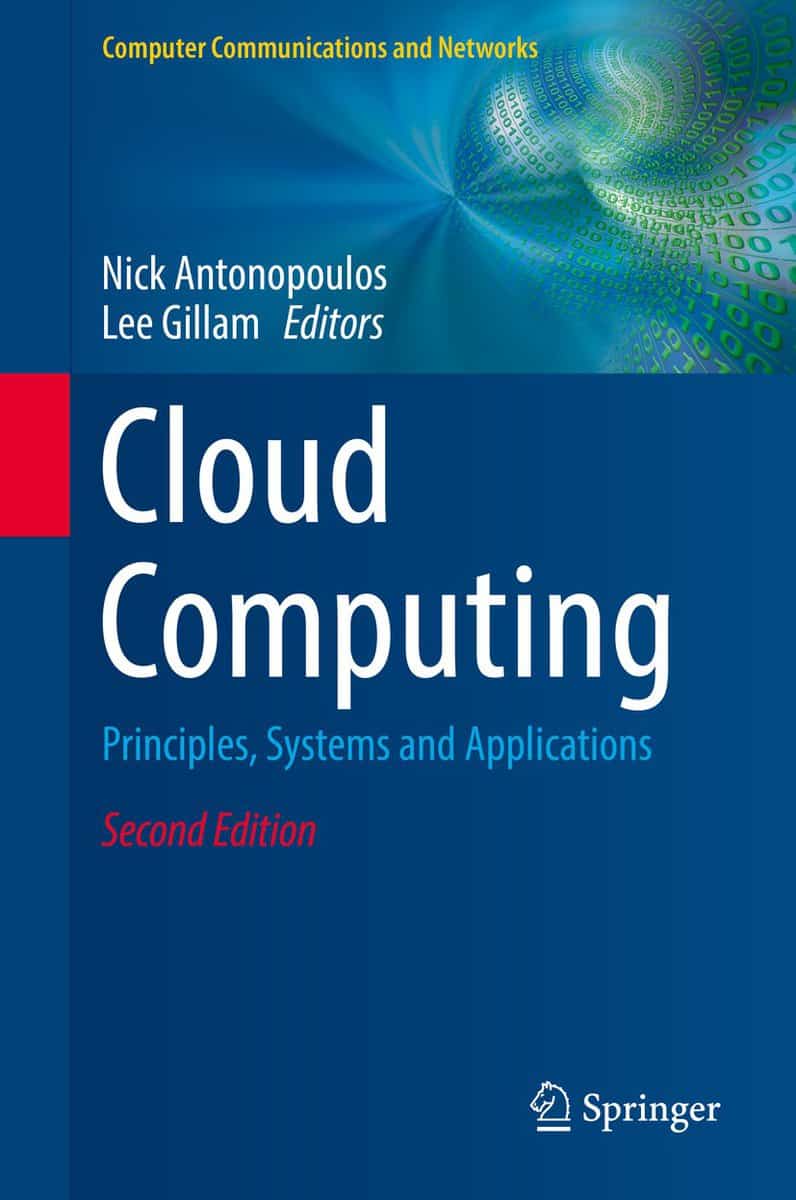
This book discusses different important issues regarding the principles of cloud computing. You will understand important issues related to the topic, like resource management, cloud provisioning, cloud compliance, etc. The book is for advanced-level readers; however, a reader with elementary knowledge can also read and understand the book.
Table of Contents
- Part I: Cloud Base
- Tools and Technologies for Building Clouds
- A Taxonomy, Survey, and Issues for Cloud Computing Ecosystems
- Towards A taxonomy for Cloud Computing from an e-Science Perspective
- Examining Cloud Computing from the Perspective of Grid and Computer-Supported Cooperative Work
- Overview of Cloud Standards
- Part II: Cloud Seeding
- Open and Interoperable Clouds: The Cloud@Home Way
- A Peer-to-peer Framework for Supporting Map-Reduce Applications in Dynamic Cloud Environments
- Enhanced Networpport for Scalable Computing Clouds
- YML-PC: A Reference Architecture Based on Workflow for Building Scientific Private Clouds
- An Efficient Framework for Running Applications
- Resource Management for Hybrid Grid
- Peer-to-peer Cloud Provisioning: Service Discovery and Load-Balancing
- Mixing Grids and Clouds: High-Throughput Science Using the Nimrod Tools Family
- Part III: Cloud Breaks
- Cloud Compliance: A Framework for Using Cloud Computing in a Regulated World
- Cloud Computing: Data Confidentiality and Interoperability Challenges
- Security Issues to Cloud Computing
- Securing the Cloud
- Part V: Cloud Feedback
- Technologies for Enforcement and Distribution Policy in Cloud Architectures
- The PRISM On-demand Digital Media Cloud
- Cloud Economics: Principles, Costs, and Benefits
- Towards Application-Specific Service Level Agreements: Experiments in Clouds and Grids
7. Cloud Security and Privacy

Almost all the cloud computing books cover security and privacy issues related to the topic, but this is the book where the only discussion point is cloud and cybersecurity and privacy. Without any doubt, this is one of the best cloud computing books that provides a clear and detailed solution to cloud security and privacy. Minor issues like audit and compliance are prime discussion points requiring a comprehensive discussion.
Table of Contents
- ‘Mind the Gap’ The Evolution of Cloud Computing
- What is Cloud Computing
- Infrastructure Security
- Data Security and Storage
- Inventory and Access management
- Security Management in the Cloud
- Privacy
- Audit and Compliance
- Example of Cloud Service Providers
- Security as a Cloud Service
- The Impact of Cloud Computing on the Role of Corporate IT
- Conclusion and the Future of Cloud
8. Cloud Services for Dummies

Cloud Services is a limited edition of IBM that explains the cloud from an excellent perspective. The book will teach you the relation and benefit of the cloud in the field of business. After reading the book, you can ideally use different clouds like public, private, and hybrid cloud models. The special point of discussion is Iaas and Paas for both public and private cloud environments.
Table of Contents
- Understanding Cloud Fundamentals and Cloud Continuum
- Digging Deeper into IaaS and Paas
- Diving into Cloud Economics
- Managing Cloud Workloads and Services
- Improving Security, Governance, and Cloud Reliability
- Starting Your Cloud Journey
9. Handbook of Cloud Computing

If you want to study cloud computing in detail, this book is perfect. This book covers fundamentals, networking, cloud weaver, load distribution, and many important issues related to the topic. A special and emphasized discussion about architecture is included in the book. You can also get elaborate knowledge about the services and applications of cloud computing.
Table of Contents
- Part I: Technologies and Systems
- Cloud Computing Fundamentals
- Cloud Computing Technologies and Applications
- Key Enabling Technologies for Virtual Private Clouds
- The Role of Networks in Cloud Computing
- Data-Intensive Technologies for Cloud Computing
- The server of Storage and Fault Tolerance
- Strategies Used in Cloud Computing
- Survey of Storage and Fault Tolerance Strategies Used in Cloud Computing
- Scheduling Service-Oriented Workflows Inside Clouds Using an Adaptive Agent-Based Approach.
- The Role of Grid Computing Technologies in Cloud Computing
- Cloud weaver: adaptive and Data-Driven Workload Manager for Generic Clouds
- Enterprise Knowledge Clouds
- Part II: Architectures
- Integration of High-Performance Computing into Cloud Computing Services
- Vertical Load Distribution for Cloud Computing via Multiple Implementation Options
- SwinDeQ-C: A Peer-to-Peter Based Cloud Workflow System
- Part III Services
- Cloud Types and Services
- Service Scalability Over the Cloud
- Scientific Services on the Cloud
- A Novel Market-Oriented Dynamic Collaborative Cloud Service Platform
- Part IV Applications
- Enterprise Knowledge Cloud
- Open Science in the Cloud: Towards a Universal Platform for Scientific and Statistical Computing
- Multidimensional Environment Data Resources Brokering on Computational Grids and Scientific Clouds
- HPC on Competitive Cloud Resources
- Scientific Data Management in the Cloud: A Survey of Technologies, Approaches, and Challenges
- Feasibility Study and Experience in Using Cloud Infrastructure and Platforms for Scientific Computing
- A cloud Computing-based patient-central medical information system.
- Cloud@Home: A New Enhanced Computing Paradigm
- Using Hybrid Grid/Cloud Computing Technologies for Environmental Data Elastic Storage, Processing, and Provisioning.
10. Implementing and Developing Cloud Computing

The book is an advanced-level book that shows how to implement cloud computing. You should have a basic knowledge of the cloud, internet, computer, and network before you start reading the book.
However, the book starts with a good introduction to cloud computing that will make beginners well-oriented about the topic. An in-depth study is included in the book about developing a cloud system. This book is one of the best cloud computing books for development and implementation purposes.
Table of Contents
- Cloud Computing is a True Paradigm Shift
- From Do It Yourself to Public Cloud—A Continuum
- Cloud Computing: Is It Old Mainframe Bess in a New Dress?
- Moving Into and Around the Clouds and Effort at Standardization
- Cloud Economics and Capacity Management
- Demystifying the Cloud: A Case Study Using Amazon’s Cloud Services (AWS)
- Virtualization: Open Source and VMware
- Securing the Cloud: Reliability, Availability, and Security
- Scale and Reuse: Standing on the Shoulders of Giants
- Windows Azure
- Google in the Cloud
- Enterprise Cloud Vendors
- Cloud Service Providers
- Practice Fusion Case Study
- Support and Reference Materials
11. Mastering Cloud Computing
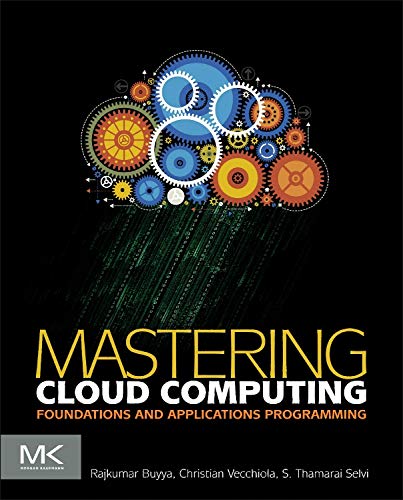
The book covers many important aspects of cloud computing, including architecture, virtualization, applications, different platforms, etc. In the middle of this book, you can learn about different programming, especially the Aneka platform.
The book discusses the industrial application of the cloud and its considerable importance. Different important types of computing, like concurrent, high-throughput, and data-intensive computing, are clear in the book.
Table of Contents
- Part 1: Foundations
- Cloud Computing, Historical Development, and Building Environments
- Principle of Parallel and Distributed Computing
- Virtualization
- Cloud Computing Architecture
- Part 2: Cloud Application Programming and the Aneka Platform
- Aneka
- Concurrent Computing
- High-Throughput Computing
- Data-intensive Computing
- Part 3: Industrial Platforms and Developments
- Cloud Platform in Industry
- Cloud Applications
- Advanced Topics in Cloud Computing
12. Microsoft System Center: Network Visualization and Cloud Computing
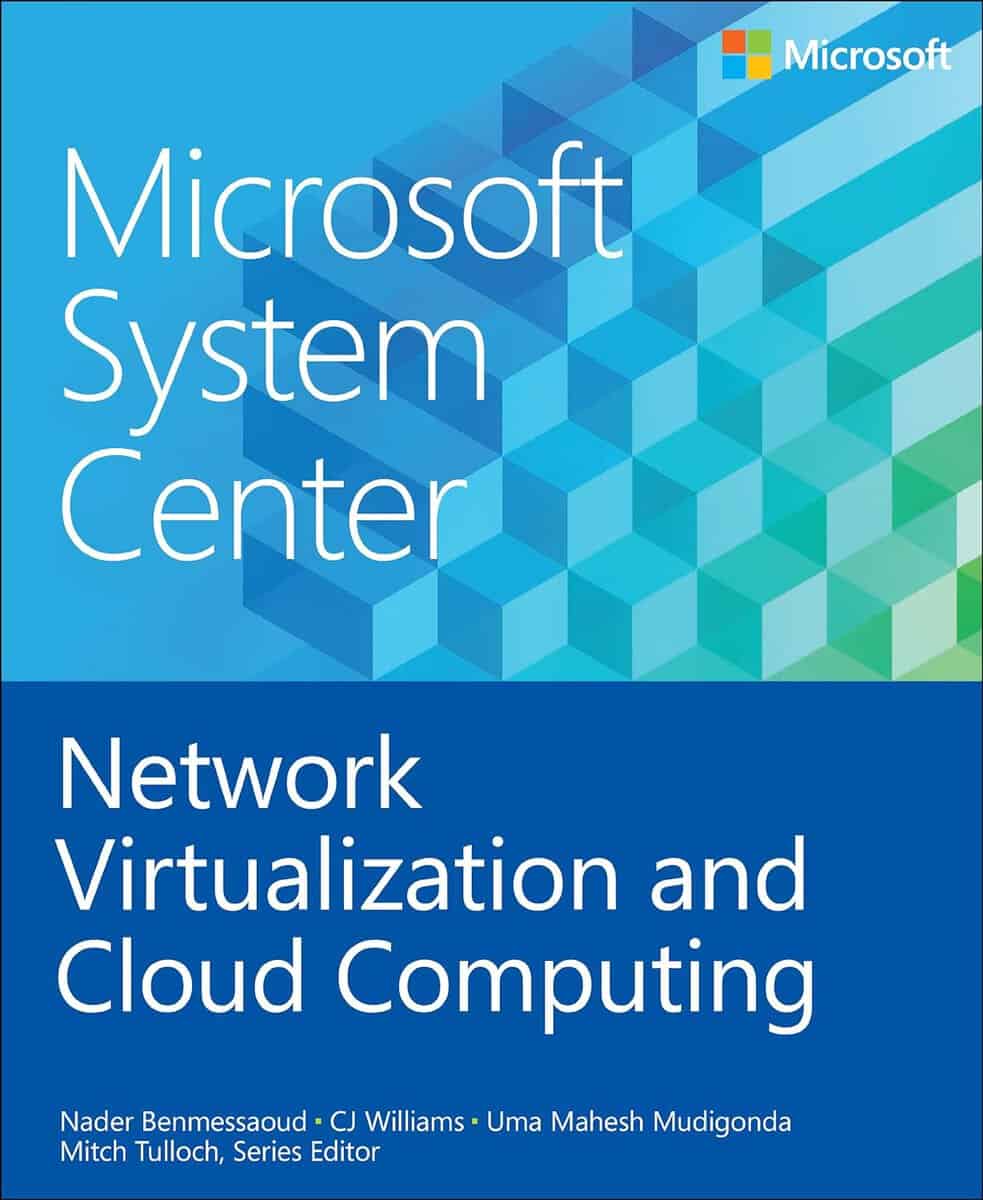
This is a great cloud computing book by Microsoft Press. The book mainly discusses the Hyper-V network and the implementation of cloud computing with virtualization. The book provides technical information about the Microsoft SDN solution. It also provides information on key usage and the development of knowledge of cloud computing. This is one of the best cloud computing books on the Windows platform.
Table of Contents
- Hyper-V Network Virtualization Internals
- Architecture and Key Concepts
- Packet Flows
- Hyper-V Network Virtualization: Simple Setup
- Implementing Cloud Computing with Network Virtualization
- Key Cloud Computing Scenarios Enabled by HNV
- HNV Gateway
- Multi-tenant TCP/IP Stack
- MUlti-Tenant S2S VPN Gateway
- Multi-Tenant Remote Access VPN Gateway
- Dynamic Routing with BGP
13. Mobile Cloud Computing: Architectures, Algorithms, and Applications

This book is an introduction, guideline, and solution to Mobile Cloud Computing. It will show you what mobile cloud computing and cloud computing are separately. At the same time, you will learn about the fusion of these two computing systems.
The book also discusses the security and privacy aspects of the topic. Different platforms like business, transportation, etc., and their relation to mobile cloud computing also come in the book with good emphasis.
Table of Contents
- Mobile Computing
- Cloud Computing
- Mobile Cloud Computing
- Offloading in Mobile Cloud Computing
- Green Mobile Cloud Computing
- Resource Allocation in Mobile Cloud Computing
- Sensor Mobile Cloud Computing
- Mobile Social Cloud Computing
- Privacy and Security in Mobile Cloud Computing
- Trust in Mobile Cloud Computing
- Vehicular Mobile Cloud Computing
- Business Aspects of Mobile Cloud Computing
- Application of Mobile Cloud Computing
- Future Research Scope of Mobile Cloud Computing
14. NIST Cloud Computing Standards Roadmap

The book is from the National Institute of Standards and Technology, U.S. Department of Commerce. NIST Cloud Computing Standards Roadmap clearly defines Cloud Computing and architecture with reference. The book will change your vision of the cloud and set a standard so that you can measure and utilize it properly.
Table of Contents
- The NIST Definition of Cloud Computing
- Cloud Computing Reference Architecture
- Cloud Computing Use Cases
- Cloud Computing Standards
- Cloud Computing Standards Mapping
- Analyzing Use Cases to Identify Standards Gaps
- USG Priorities to Fill Cloud Computing Standards Gaps
Finally, Insights!
Professor John McCarthy commented in 1961 that computing would become an organized public utility like the telephone. The present proves his thoughts. And now, it has come to such a level that people have no option but to deny it.
A lot of people are there to learn cloud computing in various ways, and a learning stuff book is the best way, as always. Thereby, we have gathered some of the best cloud computing books so that knowledge seekers can get proper guidelines on their way to learning.
Finally, we would be highly grateful if you could share your views on these books. At the same time, you are welcome to put forward your suggestions, if any. Please share our effort with others and help the knowledge seekers to learn quickly.
